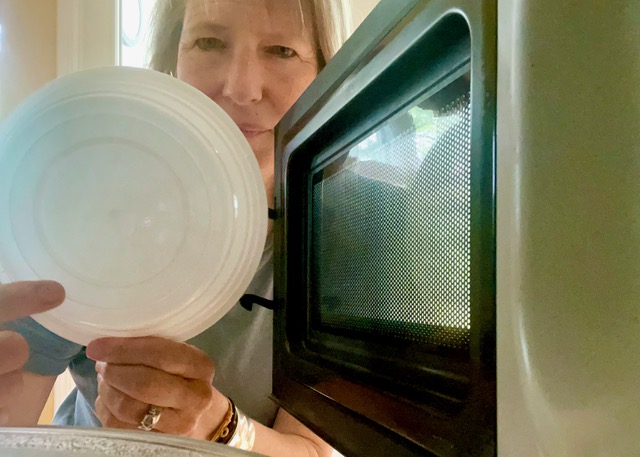
{*Did you know you can write on Elephant? Here’s how—big changes: How to Write & Make Money or at least Be of Benefit on Elephant. ~ Waylon}
~
The “Microwave Safe” marking on a plastic container just indicates that it won’t melt in the microwave. That’s all.
We shouldn’t find this comforting because it’s actually deceptive. Heating plastics is the opposite of safe, and in fact, it is always dangerous because it exposes our food, and ultimately our bodies, to many harmful toxins. Does that really sound “safe?”
If you think it is confusing, let me set the record straight.
For starters, I believe confusion was what the manufacturers were aiming for so that we keep using more plastic. After all, we buy food wrapped in plastic, we store it in plastic containers, get hot takeout in plastic, and even use plastic plates for our kids and plastic mugs for our coffee. All paper coffee cups are lined in plastic. We are a society that relies on convenience. With labels that suggest plastics are “safe” to microwave, manufacturers have created the ultimate convenience and thus we feel good. But should we?
In the scientific research over the last decade, I have read more and more information on the danger of plastics. For that reason, I aim to live a zero-waste lifestyle, which just means I create little to no trash and use only non-toxic products. Zero-waste is an imperfect lifestyle goal as plastics are ubiquitous to modern society as are everyday toxins, but that’s a bigger topic. Plastic is everywhere and we really can’t entirely eliminate it. I am after all writing to you on a computer, have a car and a cell phone all of which have plastic components. Once you know that plastic isn’t healthy, you start to find more ways to reduce.
Specifically, plastic is bad for four key reasons we should all care about.
1. Plastic leaches harmful chemicals into the air, water, soil, and our food.
2. Plastic sheds micro and nano plastic or sometimes it even dissolves, but always making its way into the air, water, soil, and our food.
3. Plastic has now been found in humans. This includes in our bodies, our blood, organs, breastmilk, placenta, and as a recent study showed in testicles. The latter somehow always manages to get a little extra media coverage.
4. Plastic and the chemicals in plastics such as endocrine disruptors are linked to many health issues such as cancer, heart disease, fertility issues, attention deficit/hyperactivity disorder, and obesity, to name a few.
If you want to increase the risk, just go ahead and heat that plastic.
Many studies have addressed heating plastics, but a recent study found that microwaving some plastics can release 4 million microplastics, and 2 billion nanoplastics for every square centimeter of the container! The study was conducted by doctorate student, Kazi Albab Hussain at the University of Nebraska-Lincoln. Hussain notes, “Many studies, including ours, are demonstrating that the toxicity of micro- and nanoplastics is highly linked to the level of exposure.” So why does the FDA consider this safe?
Instead, if you want to reduce your exposure, use as little plastic as possible.
Do you need to be perfect? Absolutely not. Clearly, in our society this isn’t easy, but the more we reduce the more we can help to lower our toxic load—the accumulation of toxins we carry in our bodies. Start small and stop microwaving plastic! Choose glass, ceramic, and even certain stainless steel containers instead.
Ready for the next step? Start storing food in glass, natural wax wrap, cotton, and stainless steel to live a less toxic lifestyle.
~
{Please consider Boosting our authors’ articles in their first week to help them win Elephant’s Ecosystem so they can get paid and write more.}
 Share on bsky
Share on bsky

Read 18 comments and reply